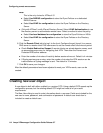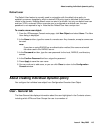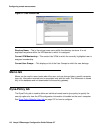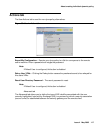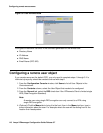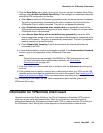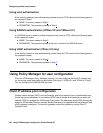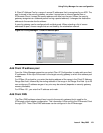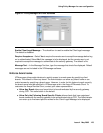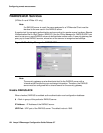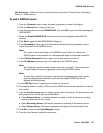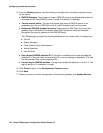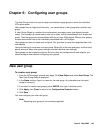
Configuring remote access users
122 Avaya VPNmanager Configuration Guide Release 3.7
Add Client WINS
The Client WINS address entered here is sent to the security gateway that is used for the
VPNremote virtual adapter configuration. This information is then sent to the VPNremote Client
through CCD. Two Client WINS address can be configured in the VPNmanager.
To configure the Client IP configuration
1. From the Configure Console window, go to Tools>Policy Manager.
2. From the Select Object Name list, select the security gateway to be configured.
3. From the Type of Policy list, select IP Client Configuration.
4. In the Current Client IP Address Pool Policy area, click Add.
5. In the Range Start text boxes, type in the address for lower boundary of the address pool.
6. In the Range End text boxes, type in the address for upper boundary of the address pool.
7. Click Apply. The contents are then cleared from the Add screen allowing for the next entry.
Repeat the process until you have entered all required Client IP Address.
8. Click Close to return to the Policy Manager for Client IP Address Pools window.
9. The new pool is seen in the Current Client IP Address Pool list.
10. (Optional) If a client DNS address should be configured, in the Client DNS area enter the
DNS address and click Add. Up to three client DNS addresses can be configured.
11. (Optional) If Client WINS should be configured, enter the WINS address to use for
VPNremote virtual adapter configuration. Two Client WINS addresses can be configured.
12. Click Save.
13. Click Close to return to the Configuration Console window.
14. When you want to send the configuration to the security gateway, click Update Device.
Configuring client attributes
From Policy Manager Client Attributes property, you can configure a message that remote users
see every time they log in and specify the brand name used for VPNRemote Client.
Creating a message
The message you create can be a legal message about company policy for using the network
or any other type of message to communicate information when remote users log in. This
message can be configured so that remote users are required to accept the message before the
log in is complete.



